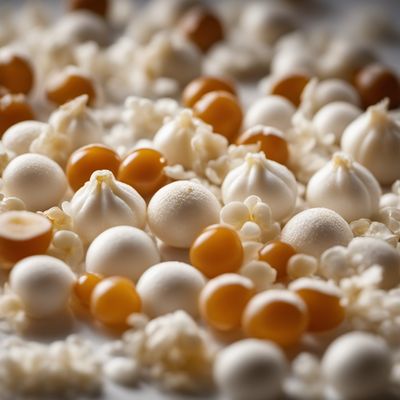
Ingredient
Profiterole
The Delicate Delight of Profiteroles
Profiteroles are made from choux pastry, which is a light and crisp dough that puffs up when baked. They have a delicate, slightly sweet taste and a soft, airy texture. The pastry is typically filled with whipped cream, pastry cream, or ice cream, and then drizzled with chocolate sauce or dusted with powdered sugar. Profiteroles are often served as a dessert or as part of an afternoon tea.
Origins and history
Profiteroles have a rich history that can be traced back to the Renaissance period in France. They were originally created by Catherine de' Medici's pastry chef and quickly gained popularity in the French court. Since then, profiteroles have become a beloved dessert in French cuisine and have spread to other parts of the world. They are commonly served during special occasions and celebrations.
Nutritional information
Profiteroles are a treat that should be enjoyed in moderation due to their high calorie and fat content. They are a source of carbohydrates and provide some essential nutrients, but their nutritional value is primarily derived from the fillings used. The calorie content and nutritional profile of profiteroles can vary depending on the specific recipe and fillings chosen.
Allergens
Eggs, Wheat
How to select
When selecting profiteroles, look for ones that are freshly baked or made on the same day. The pastry should be light, crisp, and golden in color. Avoid profiteroles that are overly soft or have a greasy appearance, as this may indicate that they are stale or poorly made. Additionally, check the fillings for freshness and quality.
Storage recommendations
Profiteroles are typically produced by skilled pastry chefs or bakers due to the technical nature of making choux pastry. However, with the right recipe and practice, amateur bakers can attempt to make profiteroles at home. It requires precision in measuring ingredients, proper mixing techniques, and careful baking to achieve the desired light and airy texture.
Preparation tips
To maintain the freshness and crispness of profiteroles, store them in an airtight container at room temperature. Avoid refrigerating them, as this can cause the pastry to become soggy. Profiteroles are best consumed within a day or two of being made to ensure optimal taste and texture.
Substitutions
Profiteroles can be served as a standalone dessert or incorporated into other desserts. They are commonly filled with whipped cream, pastry cream, or ice cream and can be topped with various sauces, such as chocolate ganache or caramel. Profiteroles are also used in desserts like croquembouche, which is a tower of profiteroles held together with caramel.
Availability
Worldwide





